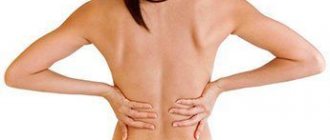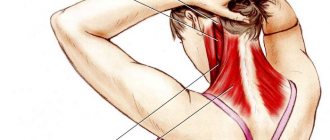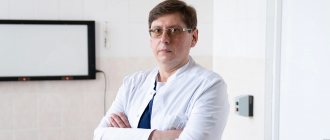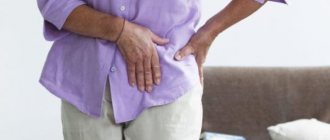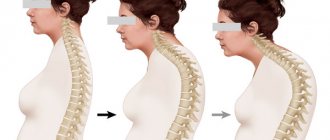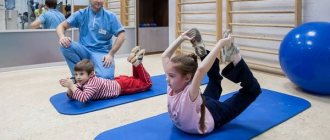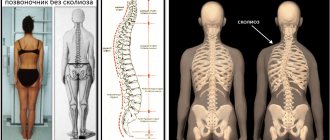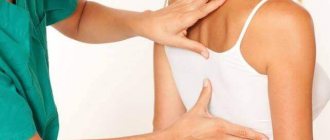Scoliosis is a disease in which the spine experiences deformation and bends, which causes dysfunction of the entire body and can lead to disability. This is a growing disease that occurs mainly in adolescent patients if it is acquired.
Scoliosis
Congenital scoliosis is diagnosed in infants, mainly under one year of age. But today the disease is increasingly occurring in adults. And it leads to serious complications and health problems.
Why is scoliosis dangerous?
Scoliosis can be completely cured only before reaching an age when the musculoskeletal system stops growing. However, scoliosis cannot be left untreated. The curvature process must be stopped and preserved so that it does not move from the initial degree to the second and subsequent ones. For this purpose, a therapeutic complex is used, one of the main points of which is physical therapy.
A set of exercise therapy exercises for scoliosis
Prices for orthopedic corsets and posture correctors
Left-sided scoliosis is...
Scoliosis of this type is a displacement of the vertebrae, forming a primary arch directed to the left . With intense load on the spine, the formation of secondary arches may occur, often due to curvature of the thoracic region.
Left-sided deformity adversely affects the activity of many internal organs : kidneys, gall bladder, heart muscle, lungs, pelvic organs and abdominal cavity. The progression of the disease causes a violation of the symmetry of the body and a deterioration in well-being.
Pay attention to exactly what left-sided scoliosis looks like
History of development
Stage 1 of left-sided thoracic scoliosis occurs with virtually no visible symptoms . Further development of the disease is characterized by an increase in spinal displacement. At these stages, the disease can still be corrected.
In the absence of proper therapy, the disorder quickly progresses and progresses to stage 3. This period is characterized by the formation of a compensatory arch that stabilizes the spine. Secondary curvature helps maintain correct head position and maintain balance in the lower back.
At stages 3-4 of scoliosis, the patient is concerned about such manifestations as : asymmetry of the body in the chest area, the formation of a hump, disruption of the heart and lungs, sharp pain. To eliminate the disease at these stages, a predominantly surgical method is used. Curvature of the spine to the left in the lumbar region at the initial stage has mild symptoms . Deformation in this zone is characterized by light and slow development.
With stage 4 scoliosis, the following are observed : changes in the structure of the pelvis, unevenness of the gluteal fold, a visual difference in the length of the legs, prolapse of the right kidney, problems with the pelvic organs. With lumbar curvature, a compensatory arch is rarely formed, since the displacement is located near the center of gravity.
If a secondary arc does appear, it is expressed very weakly. In cases where treatment is not started on time, scoliosis can become severe. Deformation of the vertebrae is one of the causes of the development of osteochondrosis, hernia and other diseases of the musculoskeletal system.
Classification
Scoliosis directed to the left side can be classified according to the following reasons::
| By origin: | By location zone: | By degree of development: | |
|
| Stage 1 | vertebral displacement less than 10 degrees. It goes unnoticed, there is no severe pain. |
| Stage 2 | deformation angle no more than 25 degrees. Curvature and asymmetry of the body become noticeable and are accompanied by aching pain in the back after physical activity. | ||
| Stage 3 | spinal deviation up to 50 degrees. Pronounced changes in the position of the shoulders and ribs, frequent sharp pain. | ||
| Stage 4 | tilt angle more than 50 degrees. Significant changes in the spine, appearance of a rib hump, limited movement, severe pain. | ||
Prevalence
Left-sided curvature is a common pathology , which is often diagnosed in schoolchildren between the ages of 10 and 14. In most cases, girls are affected by the disease. This is due to the fact that they are less active and more diligent than boys.
The number of people suffering from scoliosis is constantly increasing. Adults also appear among the patients. According to statistics, people living in the city are diagnosed with this type twice as often as residents of villages and villages.
What exercises can you do for scoliosis?
Scoliosis processes can be stopped by engaging in certain types of sports that strengthen the spinal muscle tissue. Such treatment is especially recommended for pediatric patients and those whose scoliosis processes are in the early stages of development, so that the disease does not develop further.
Massage procedures, swimming, Pilates or yoga, as well as the Bubnovsky technique will help strengthen the musculoskeletal system, train muscles, improve posture and spine.
Yoga exercise therapy for scoliosis in pictures
All these measures will help prevent injury to internal systems and organs.
The former have a uniform effect on all muscle groups located symmetrically relative to the vertebrae. Such elements help strengthen the tone of muscle tissue, develop endurance and strength. They are usually prescribed at the initial stages of the scoliosis process.
A complex of asymmetrical elements affects muscles differently. Such gymnastics forces toned muscle tissues to relax, and weakened ones, on the contrary, are trained. Such exercises require supervision by the instructor, since incorrect execution technique can lead to adverse consequences.
We advise you to study - Treatment of back painCauses
Scoliotic disease can develop as a result of congenital pathology or birth trauma, and can also be formed due to incorrect posture, certain diseases and other factors. In approximately 80% of cases, the causes of curvature remain unidentified and are idiopathic in nature.
The main congenital factors provoking scoliosis of the lumbar and thoracic region:
- malformations of the spine formed in utero;
- birth injuries.
Purchased:
- spinal injuries;
- leg length asymmetry;
- torticollis;
- rheumatoid arthritis;
- osteochondrosis;
One of the most common causes of scoliosis is incorrect body position while sitting, osteoporosis;- osteomyelitis;
- rickets;
- polio;
- cerebral palsy;
- malignant tumors in the spine;
- endocrine system failures;
- hormonal disorders;
- excessive stress on the spine;
- physical inactivity;
- frequent poor posture;
- carrying heavy bags on the right shoulder;
- regularly sleep on the right side.
In some patients, the disorder can become extremely severe.
People are at risk:
- elderly;
- with congenital pathologies;
- patients with coxarthrosis;
- having an intervertebral hernia;
- suffering from stage 3-4 thoracic scoliosis on the right side.
The main tasks of exercise therapy for scoliosis
The result of treatment depends on:
- type of scoliosis;
- curvature shapes (C, S or Z-type);
- stages of the disease (there are four in total);
- age of the patient.
In the first and second stages, you can expect serious improvements and even complete recovery; in the third and fourth stages of the disease, it is not always possible to achieve the desired result. Much here will depend on the patient’s fortitude and willpower. Children aged 10-15 years should be helped by their parents to get ready to fight the disease. They can also control and encourage the child to perform the complexes regularly.
Attention: before starting classes, you must consult a doctor. Only a specialist will tell you what types of physical activity you need to do in your case.
It is rare, but it happens that physical education is contraindicated for the patient.
Orthopedic doctors identify five serious problems that can be solved through exercise therapy.
- Elimination of imbalances in muscle and ligament sprains.
- Removing excessive stress from the spine.
- Correction of posture.
- Strengthening the muscle corset.
- Providing a general healing effect on the body.
Symptoms and diagnosis
The symptoms of spinal deformity depend on the location of the lesion and the degree of development of the disease.
External signs of scoliosis directed to the left :
| In the lumbar region | In the thoracic region | |
| Stage 1-2 |
|
|
| Stage 3-4 |
|
|
Diagnosis of displacement is carried out on the basis of a patient interview and visual examination. To establish the most accurate result, X-ray examination is used. The spine is photographed in three positions: sideways, standing, lying down.
A set of exercises for thoracic scoliosis
A set of exercise therapy exercises for scoliosis in the thoracic spine consists of 3 phases:
- warm-up,
- main,
- final.
Warm-up consists of performing simple exercises that warm up the muscles and prepare them for the load. The main part includes symmetrical and asymmetrical loads on the thoracic region, aimed at correcting the position of the spine. The final part contains exercises for breathing and coordination of movements.
Asymmetrical corrective exercises can be done independently only after completing a course of exercises with an exercise therapy instructor and practicing the skills for their correct implementation.
Symmetrical therapeutic exercises for first-degree thoracic scoliosis can be performed using a mirror for self-control.
Several corrective symmetrical exercises:
- Stand up straight. Put your hands down. Straighten your shoulders and move your shoulder blades towards each other. Hold the position for a few seconds, then relax your shoulder girdle. Repeat 10 times.
- Lie face up on the floor. Hands along the body. Exhaling slowly, pull your knees towards your stomach, and while inhaling, take the starting position. Performed 5 times.
- The position of the body and arms is as in the previous exercise. Raise your legs at an angle to the floor by about 40-60 degrees and make longitudinal and transverse crossings. The exercise is performed for 1 minute. You need to take a short break between approaches. Repeat 4-5 times.
Attention! Perform all exercises slowly without sudden movements. You need to do exercise therapy at least 4 times a week, switching to daily training as the disease progresses.
Treatment
Did you know that...
Next fact
The possibility of curing scoliosis primarily depends on the stage of development of the disease. In cases where the curvature can no longer be corrected, the goals of therapy are to stop the progression of the disease and maintain health with strengthening procedures.
To get rid of the disease, conservative methods are more often used, which include:
- special gymnastics;
- massage;
- swimming;
- manual therapy;
- physiotherapy;
- wearing a corset;
- medical preparations.
Conservative therapy is prescribed in the initial stages of scoliosis development in the absence of a threat to internal organs. In severe and advanced cases, surgical intervention may be required.
Medications
Medicines for scoliosis are prescribed as an addition to the main therapy, since they are not able to straighten the spine.
Medications used for this disease include : vitamins; restorative medications; analgesics.
Surgical method
The reasons for the use of surgical intervention are:
- lack of proper results with conservative treatment;
- rapid progression of the disease to stages 3-4;
- particularly severe course of the disease;
- severe displacement of internal organs, creating a threat to health;
- constant sharp pain;
- the angle of curvature exceeds 40 degrees.
The surgery involves fixing and realigning the spine using metal plates. This is followed by a long recovery period, which involves wearing a corset, physical exercise, massage and other procedures.
This is what spinal correction looks like using surgery
Massage and gymnastics
Massage is one of the most effective methods of treating scoliosis. In combination with physical therapy, it corrects and in some cases eliminates the curvature.
Massage helps strengthen the muscle corset, improve nutrition of the tissues around the spine and stimulate and relax the muscles.
For successful therapy, massage sessions should be attended at least twice a year for 10-15 procedures , and their duration is 30-40 minutes.
Physical therapy is the main means of treating left-sided curvature of the spine.
Special gymnastics promotes:
- eliminating curvature;
- reducing pressure on internal organs;
- maintaining correct posture;
- strengthening the muscles on the left side and relaxing them on the right.
Physical exercise is allowed only after permission from a doctor. The doctor will help you choose a suitable training regimen and explain the technique of its implementation. At the first lesson, the presence of a specialist is mandatory; in subsequent sessions, warm-ups are performed independently. To achieve the best results, physical training is carried out daily.
Approximate gymnastics for displacement of the vertebrae to the left:
- Get on your knees, lean on your hands. Extend your left arm and right leg in turn, then change to the opposite.
- Stand up and slowly rise on your toes, raising your arms up.
- Place your feet shoulder-width apart. Perform circular movements with your arms back and forth.
- Lie on your back, arms extended along your body. Bend your legs, bring them towards your stomach and straighten them.
- Lie on your back, rest your left hand on the floor, place your right hand behind your head. Perform scissor-like movements with your feet.
- Lie on your stomach, put your left hand on your chest, your right hand behind your head. Raise your chest and return to the starting position.
- Lie on your stomach, keep your hands under your chest. Raise straight legs to 20-30 degrees.
- Lie on your stomach, place your arms along your body. Move your raised left leg to the side.
Each exercise is performed 6-7 times. After gymnastics, you need to rest a little, lying on your back, relaxing your muscles.
Video: “Exercises for left-sided scoliosis”
Traditional methods
In addition to traditional methods of therapy, traditional medicine is also used in the treatment of scoliosis. Home-prepared drugs are not able to straighten the position of the spine, but they successfully help relieve pain, eliminate spasms, and relax muscles.
To make you feel better when suffering from vertebral deformities, the following recipes are used::
- Dissolve 2 tablespoons of salt in 250 ml of warm water. Dip a bandage into the solution, then apply it to the painful area for a couple of hours.
- Grind equal portions of potatoes and horseradish in a meat grinder. Mix the mixture well, put it on a bandage or gauze and apply it to the sore spot until you feel a strong burning sensation.
- Knead the dough in water using rye flour. Apply the lozenge to the affected area.
- Boil 1 kilogram of aspen bark in 3 liters of water for 10-15 minutes. After this, strain and add to the bath.
- Boil 0.3 kg of chamomile flowers in 3 liters of water for 6-8 minutes. Then strain the broth and use it for a bath.
It is recommended to take medicinal baths for 7 days, using different decoctions. The chest and heart area must be placed under water. The duration of one procedure should not exceed 20 minutes.
What exercises are there?
There are two types of exercise for this disease. Symmetrical and asymmetrical. The latter type is necessary for the development of muscle tissue for only one region of the spinal column. Asymmetrical exercises are divided into those that correct curvature and those that are necessary to align the skeleton in the lumbar region.
Without the supervision of a specialist, it is not recommended to perform asymmetrical exercises, since if performed incorrectly, there is a risk of harming the spine, as well as increasing the rate of development of the disease. Symmetrical exercises distribute the load on the back muscles evenly.
Scoliosis 1st degree
In order to cope with grade 1 curvature of the spinal column, the following physical exercises are used in a standing position.
- Walking in place. You should monitor the position of your back; it should be as straight as possible.
- The torso is lifted, while the arms also reach up.
- The arms are raised, while the feet are prohibited from being lifted off the floor. After this, the hands gradually lower.
The following exercises are performed while lying down:
- The elbow of the left hand reaches towards the right knee. After this, a similar exercise is performed for the other leg and arm.
- In turn, you need to pull your knees to your chest.
- Without taking your hands off the surface, you need to raise both legs. After this, you need to tilt them in different directions.
- Press your shoulders against the supporting surface. After this, stretch your back and legs for 30 seconds.
- A gradual lifting of the legs, previously bent at the knees, is carried out. After this, the hands clap behind the legs.
Scoliosis 2 degrees
One of the effective exercises for S-shaped scoliosis.
- You will need a chair that does not have a back. Your feet should be shoulder-width apart and your hands should be placed behind your head.
- You need to turn alternately to the left and right to a right angle, while your legs do not move.
Another effective exercise:
- You need to lie down on a chair. The spatulas should rest against the edges of the furniture.
- The head drops.
- You need to bend over.
If the exercise is too easy to perform, you can use a load.
Exercises for the spinal column and back
This task will help reduce physical stress on the spine:
- You need to take a pose on all fours.
- Walk in this position for 3 minutes. It should be performed either at a slow or medium pace.
This task will help stretch the spinal column:
- You need to take a lying position. Pull the crown up and the heels down.
- You need to breathe calmly in this position.
- The extended position is fixed for 15 seconds, 4 repetitions.
The exercise can also be performed while lying on your stomach.
"Bike"
- The exercise is performed in a lying position, with your arms pressed against the support.
- You should use your legs to imitate riding a bicycle.
- The lumbar region should be pressed against the support.
- The exercise is performed for half a minute in 3 sets.
"Scissors"
- The exercise should be performed in a lying position, arms along the body.
- It is necessary to perform cross movements with your legs.
- Vertical and horizontal crossing should be alternated.
- The lumbar region should be pressed against the support.
- The exercise should be performed for half a minute, 3 sets.
The exercise can be performed while lying on your stomach.
- The exercise is performed while lying on your stomach.
- It is necessary to arch your back and raise your legs straight.
- After this, the arms also rise and spread to the sides.
- After this, you need to imitate breaststroke swimming.
- The exercise should be performed 10 times in 2 or 3 approaches.
Exercises for the thoracic region
First exercise
- In a lying position, your hands must be folded at the back of your head.
- During inhalation, the elbows move apart.
- When exhaling, you need to return to the starting position.
- The exercise should be performed in 3-4 approaches.
We advise you to study - Broke my back - what to do at home
Second exercise
- A supine position is assumed.
- Alternately, the legs are bent and brought to the stomach.
- The legs should be straightened while inhaling.
- The exercise should be performed 5 times.
Third exercise
- The position is assumed lying on the stomach.
- The torso bends in the chest area during inhalation.
- When exhaling, you need to return to the starting position.
- The exercise is performed 4 times.
Fourth exercise
- You need to get on all fours.
- While inhaling, you need to extend your leg and cross your arm.
- During exhalation, the starting position is assumed.
- The exercise is performed 6 times.
Prevention
The development of left-sided curvature of the spinal column can be prevented by knowing the simple rules of prevention that should be followed from childhood.
It is important for children to choose the right orthopedic furniture. To prevent scoliosis you need to:
- choose furniture for the child in accordance with age, height and other physiological parameters;
- relax and sleep on an orthopedic mattress;
- use a backpack for studying with two soft straps;
- control posture when walking and sitting;
- take breaks during sedentary work;
- avoid excessive physical activity;
- exercise regularly and lead an active lifestyle;
- eat properly and balanced;
- periodically examine your health status.
For the treatment and prevention of scoliotic disease, it is necessary to consume foods containing:
| Name of components | Products name |
| Squirrels | chicken, fish, beef, chicken and quail eggs, dairy products |
| Calcium | feta cheese, cottage cheese, sour cream, hazelnuts, walnuts, beans |
| Vitamin A | fish oil, beef liver, eggs, butter, cream, sour cream |
| Vitamin C | rose hips, sea buckthorn, celery, green dill, sweet peppers, broccoli, Brussels sprouts |
| Vitamin D | herring, salmon, yolks, butter, sour cream, liver |
| Vitamin E | soybean oil, almonds, peanuts, peas, spinach, salmon |
| B vitamins | corn, tomatoes, potatoes, bread, bran, pork, chicken, yolk, cheese |
If there is curvature of the vertebrae, you should also include fruits, vegetables, grains, seafood, and seaweed in your diet - the composition of these products includes many vitamins and elements that are beneficial for bone tissue.
Contraindications and side effects of exercises for scoliosis
Therapeutic gymnastics, designed to strengthen the back muscles, is initially a gentle option for physical education, so it has no absolute contraindications. However, there are recommendations to postpone exercise therapy classes indefinitely if:
- other diseases have worsened;
- the situation was complicated by infection;
- blood pressure disorders were detected;
- headaches appeared.
Any negative deviation in well-being during exercise therapy to strengthen the back muscles with scoliosis entails strict control of the exercises by the attending physician. Or even their cancellation. Such stop factors can be:
- progression of scoliosis;
- the appearance of pain and discomfort from exertion;
- detection of diseases of the cardiovascular or respiratory systems.
If physical education is indicated for fourth-degree scoliosis, accompanied by displacement of internal organs, constant professional medical supervision is required.
In case of scoliosis of the 4th degree, classes should be carried out under the constant supervision of a doctor.
Forecast
Scoliosis on the left side of the spine is highly treatable . At the initial stages of development, it can be corrected using the correct complex therapy. With proper treatment, in most cases, the progression of the disease can be stopped and the patient’s well-being can be significantly improved.
Initial stage curvature in children and adolescents is completely eliminated with the help of special gymnastics, massage courses and manual therapy. For adult patients, the same procedures will help level out the displacement by 2-3 degrees. Scoliosis grades 3 and 4 in patients over 20 years of age can be successfully treated through surgery.
Rules for performing therapeutic exercises
There are some peculiarities when doing exercises to treat your back. For example, exercise therapy for scoliosis in children, exercises for which are selected by the doctor individually for each case, are carried out regularly.
Attention! Consult your doctor about exercise therapy for your child. You can start classes after determining an individual exercise therapy program and a doctor’s prescription. The standard complex is not suitable for everyone
It all depends on the department where scoliosis manifested itself and the stage of the disease. Someone will have to eliminate some exercises
The standard complex is not suitable for everyone. It all depends on the department where scoliosis manifested itself and the stage of the disease. Some people will have to eliminate some exercises.
There are a number of basic exercises for scoliosis, but in some cases some exercises are excluded.
Note! Exercise therapy is carried out regularly. The classes are not long: for the youngest schoolchildren it is 15 minutes maximum, for teenagers – about half an hour.. To correctly, effectively perform exercise therapy and avoid injuries during the session, some rules are followed:
To correctly and effectively perform exercise therapy and avoid injuries during the session, adhere to some rules:
- perform gymnastics in a ventilated room;
- It is desirable to have mirrors that help you perform the exercises correctly;
- do a warm-up, qualitatively warming up the ligaments and muscles;
- exercises are performed slowly, without jerking;
- heavy loads are excluded (dumbbells, barbells);
- Exercise therapy is performed only as prescribed by a doctor, using individually selected exercises.
Charging is performed smoothly, without sudden movements, with muscle tension.
If acute back pain, dizziness, or tachycardia occurs, stop exercising.
Muscle strengthening exercises
Arm and leg raise
- Lie on your stomach, stretch your arms forward.
- Raise your right arm and left leg at the same time.
- Breathe evenly and maintain the position for five breathing cycles.
- Repeat the exercise by raising your left arm and right leg.
There is another variation of this exercise:
- Lie on your stomach, stretch your arms forward.
- Place your palms on a raised surface about 20 centimeters or, if you have sufficient shoulder mobility, on the seat of a chair.
- Pressing your palms into the raised area, lift your body off the floor so that your palms are at shoulder level.
- Hold the pose for five breaths and lower down.
- Repeat several times.
